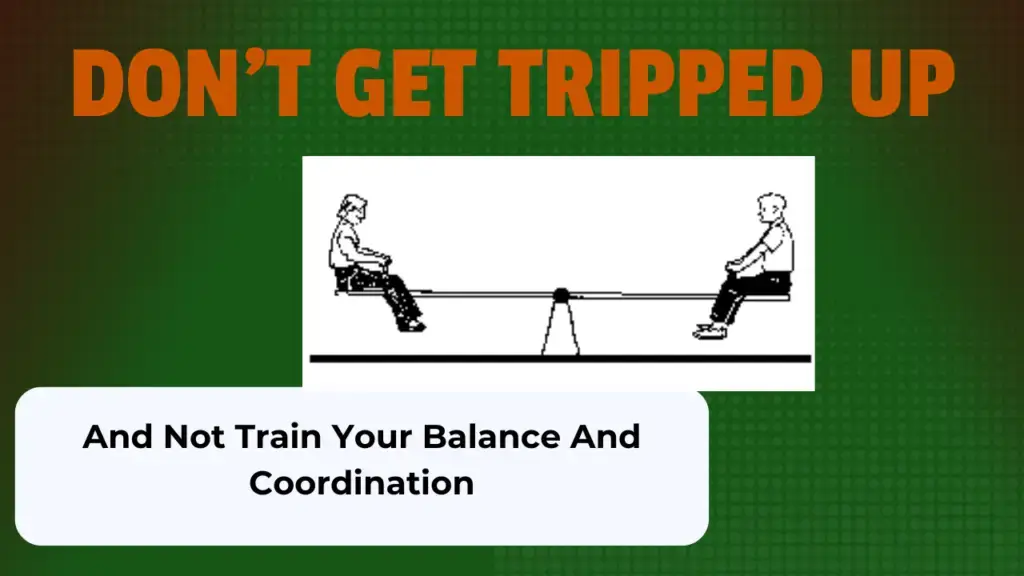Balance and coordination are more than just “nice-to-haves.” They are the foundation of a strong, mobile, and pain-free body.
Yet most people either skip them entirely or throw them in as an afterthought. Even worse, many believe, “I’ve just never had good balance — that’s how I am.”
That’s simply not true. You can absolutely train your balance and coordination — and if you want strength, mobility, or long-term physical freedom, you need to.
Click on the image to watch the full video

What Happens When You Skip Balance and Coordination?
Here’s the reality: if your body feels unstable, your nervous system will prioritize not falling over getting stronger or more mobile.
That means:
- Strength exercises become less effective
- Stretching gets compromised
- Progress stalls
- Injuries creep in
Even slight instability sends signals to your brain to play it safe — sabotaging the very adaptations you’re working toward.
Why Most People Ignore This (and What to Do Instead)
Walk into any gym and you’ll see people jumping into workouts, machines, or classes without ever addressing balance and coordination.
Why?
- Most people don’t know how to train them
- Trainers often only use basic drills like standing on one foot or a BOSU ball
- Online content repeats the same watered-down advice
Real balance and coordination training requires more than circus tricks. It demands a structured, segmental approach that builds your foundation from the inside out.
What True Balance Looks Like
To train balance and coordination effectively, we need to go beyond standing on unstable surfaces. You need to consider:
✅ Your Posture (Plumb Line)
- Ear, shoulder, hip, ankle aligned
- Look at yourself from the side and front for asymmetries
- Use a straight reference like a wall, pole, or line
✅ Your Gravity Line (4° Cone)
- Think of a cone extending from your feet up
- You should be able to move and stabilize within that zone
- Outside the cone? Your body burns energy just trying not to fall
✅ Your Internal Balance
- Fascia, joints, and proprioceptors (tiny sensory receptors) must all do their job
- The more balanced your system is, the more energy goes to performance — not survival
What Coordination Really Means
Coordination is how well your brain and body communicate. It happens through:
- Afferent & efferent signals (to and from the brain)
- Proprioceptors (those “little computers” that detect joint position and movement)
- Neuromuscular patterns (engrams) that form from repetition
When trained well, coordination turns conscious effort into automatic flow. Think of how skiing, dancing, or driving became easier with repetition — that’s coordination in action.
How to Train It (Without Hurting Yourself)
You don’t start by balancing on one leg with your eyes closed on an unstable surface. You start simple:
✅ Two feet, flat surface
✅ Stable foundation
✅ Good posture
✅ Small, controlled movements that build from the inside out
Then you layer complexity after the foundation is solid.
A Cautionary Tale (The BOSU Ball Fail)
I once watched a trainer put an elderly client — already shuffling when walking — on a BOSU ball. The man fell hard. Why? Because he hadn’t earned the right to be there yet.
We glorify flashy, unstable exercises and ignore the basics. But what the body really needs is to start with the fundamentals — and master them.
No Cookie-Cutter Fixes — Only Real Progress
There’s no “3 best balance exercises” for everyone. Your body is unique. You need a holistic fitness program that trains your entire system — from small stabilizers to global movement chains.
That’s why balance and coordination must come first. They make every other movement:
- Safer
- More effective
- More sustainable
Want to Build Real Balance and Coordination?
Here are your next steps:
✅ Download my free guide: Four Steps to a Strong, Mobile Life
✅ Book a free consultation: We’ll talk about your goals, challenges, and create a strategy
✅ Stick around: This blog and my YouTube channel are packed with holistic movement insight — no gimmicks, just truth
Let me know in the comments — are you training your balance and coordination? If not, what’s held you back?
See you next week.
it’s not just working out, it’s building a foundation for a better life.
Find out more @

Leave a Reply